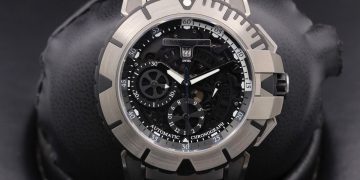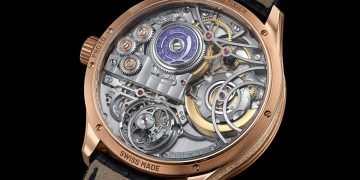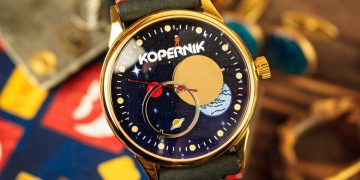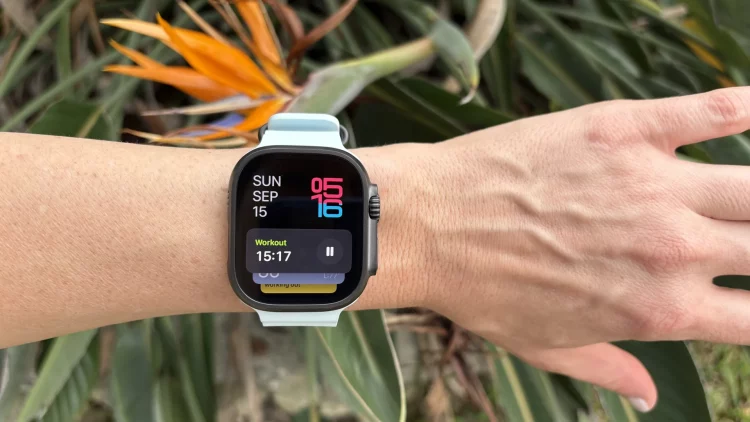Introduction: The Rise of the Apple Watch in the Wearables Market
Since its debut in 2015, the Apple Watch has transformed from a stylish accessory into a critical tool for modern consumers, seamlessly integrating into the lifestyle of millions around the globe. With its constantly evolving features—from health monitoring to smart functionality—the Apple Watch has garnered a diverse and dedicated user base. But who exactly are these users? What do they appreciate most about the device? How do they evaluate its overall performance, features, and impact on their daily lives?
In this article, we will dive deep into the user demographics, feedback, and evaluation of the Apple Watch. We will explore how Apple Watch owners perceive its functionality, design, and value, while also examining the pros and cons highlighted in user reviews. Through a thorough analysis, this piece will offer a comprehensive overview of the Apple Watch from the perspective of those who use it daily, from the tech-savvy early adopters to those new to the world of wearables.
1. The Apple Watch User Base: Who Are They?
The appeal of the Apple Watch spans a broad spectrum of demographics, and its user base includes people from all walks of life. However, the target market for the Apple Watch varies based on different models and features. We will break down the users of the Apple Watch based on age, lifestyle, and specific needs.
a. Tech Enthusiasts and Early Adopters
The first group of users were the early adopters—tech-savvy individuals eager to explore the latest gadgets and innovative wearables. For these consumers, the Apple Watch is more than just a watch; it’s an extension of their smart ecosystem. They value the watch’s ability to sync seamlessly with other Apple devices such as the iPhone, iPad, Mac, and Apple TV. Early adopters appreciate:
- The advanced technology and cutting-edge features.
- Integration with the Apple ecosystem, including Siri, Apple Music, iMessages, and Apple Pay.
- The regular updates from Apple, ensuring that the Apple Watch constantly evolves with new features.
b. Health and Fitness Enthusiasts
A major group of users is those who use the Apple Watch for health and fitness tracking. The Apple Watch has built a reputation as one of the most feature-packed wearables for tracking health metrics such as:
- Heart rate monitoring.
- Activity rings (Move, Exercise, Stand goals).
- ECG readings (Electrocardiogram) and blood oxygen levels (available in newer models).
- Sleep tracking (introduced with watchOS 7).
For health-conscious individuals, the watch is an indispensable tool for staying on top of fitness goals, tracking workouts, and encouraging a more active lifestyle.
c. Professionals and Busy Individuals
Professionals who are always on the go value the Apple Watch’s convenience. The ability to:
- Check notifications without having to pull out a phone.
- Respond to messages and answer calls directly from the watch.
- Keep up with calendar events, reminders, and to-do lists.
This functionality has made the Apple Watch a staple for many busy professionals, including those in finance, marketing, healthcare, and tech industries.
d. Seniors and Health-Conscious Users
The fall detection and SOS features have made the Apple Watch particularly attractive to older adults and those who are health-conscious. The Series 4 and later models include fall detection, which can automatically notify emergency contacts if a user experiences a fall. Furthermore, features like heart rate monitoring and irregular heart rhythm notifications provide an added layer of safety, alerting users about potential health concerns.
e. Fashion and Lifestyle Enthusiasts
The design of the Apple Watch has evolved to cater to fashion-conscious consumers. Over the years, Apple has released various materials, colors, and band options that allow users to personalize their devices. The Apple Watch Edition and Apple Watch Hermès lines are designed with luxury in mind, offering materials like ceramic and stainless steel, along with premium straps. For many users, the Apple Watch is as much a fashion accessory as it is a piece of technology.

2. User Evaluation: What Do Apple Watch Owners Value Most?
When evaluating the Apple Watch, users generally cite the following categories of importance:
a. Health and Fitness Features: A Core Selling Point
For many users, the health tracking capabilities are the most important feature of the Apple Watch. Apple has positioned the watch as a health companion, providing various tools to monitor physical well-being. Here’s a deeper dive into how Apple Watch users evaluate these health features:
- Activity and Fitness Tracking: Apple’s Activity rings have been a game-changer for users who are motivated by visual progress. Users find the daily goals—Move, Exercise, Stand—easy to track, and the notifications and reminders encourage regular physical activity.
- Heart Rate and ECG: The heart rate monitor is widely praised for its accuracy in both resting and exercise conditions. Users with heart conditions, in particular, have found the ECG functionality invaluable, providing them with real-time data that could indicate potential heart problems, even offering alerts for irregular heart rhythms.
- Sleep Tracking: With the introduction of sleep tracking in watchOS 7, many users have embraced the ability to track their sleep patterns and monitor sleep quality, although some feel the need for deeper insights beyond what the watch currently provides.
- Blood Oxygen Monitoring: Newer models (Apple Watch Series 6 and later) include blood oxygen monitoring, which has been especially useful for users concerned about their respiratory health.
b. Seamless Integration with the Apple Ecosystem
A key value proposition for Apple Watch owners is its seamless integration with the Apple ecosystem. Users who are already invested in Apple products find that the Apple Watch becomes an extension of their devices, offering several advantages:
- Apple Pay: The ability to make contactless payments directly from the wrist is one of the most popular and convenient features.
- Notifications and Communication: Apple Watch users can receive and respond to messages, emails, and app notifications directly from their wrists, without needing to pull out their phones.
- Siri Integration: For those already familiar with Siri, the Apple Watch provides another platform for voice commands, making it easy to control smart home devices, set reminders, and check the weather.
c. Design, Customization, and Comfort
Another area where Apple Watch users are generally positive is the design and customization options. Users appreciate:
- The ability to personalize the watch face and choose from a wide variety of bands and materials.
- The lightweight and comfortable design, which makes it suitable for all-day wear.
- Battery life (typically 18 hours on a full charge) is usually seen as satisfactory for daily use, though some heavy users wish for longer-lasting battery life, particularly for sleep tracking and continuous fitness monitoring.
d. Battery Life and Performance
While the Apple Watch delivers impressive performance for its size and capabilities, battery life remains a common point of criticism for some users. The watch typically requires charging every night to maintain functionality throughout the day. Apple’s optimizations (like Power Reserve mode) have mitigated some issues, but for users who rely heavily on the watch’s health features, the daily charging requirement can feel cumbersome. However, many users report that the benefits outweigh this inconvenience.
3. Challenges and Drawbacks: What Do Apple Watch Users Dislike?
Despite its many advantages, the Apple Watch is not without its criticisms. Some of the most common concerns users have with the Apple Watch include:
a. Battery Life Limitations
As mentioned earlier, many users find the 18-hour battery life to be inadequate for their needs, especially when using features like fitness tracking and sleep tracking. For heavy users or those on long trips, the necessity of daily charging can be a drawback. Additionally, fast charging capabilities are not as prominent as those seen in other wearable devices.
b. Price and Value for Money
While the Apple Watch is packed with features, it also comes with a premium price tag. Users sometimes question whether the price of the Apple Watch is justified, particularly for those who may only use the device for basic functionalities like notifications or timekeeping. Although there are more affordable options in the wearable market, Apple’s offering is often seen as a premium investment.
c. Limited Compatibility Outside of the Apple Ecosystem
The Apple Watch is designed specifically to work with iPhones, which limits its appeal to non-Apple users. Those who are on Android devices or prefer an open ecosystem often find the Apple Watch a less viable option, as it lacks the universal compatibility seen with other brands like Fitbit or Garmin.
d. Health Features Limitations
While the health and fitness features are generally praised, some users feel that the sleep tracking and ECG features could be more advanced, offering greater insight into overall health metrics. Similarly, certain advanced features like blood glucose monitoring and stress tracking are still absent, leaving a gap in terms of comprehensive health management.
4. The Future of the Apple Watch: What’s Next?
As Apple continues to iterate on the Apple Watch, it’s clear that health and fitness will remain a focal point of the brand’s strategy. Future updates could include:
- Longer battery life: Extended battery performance would elevate the Apple Watch’s capabilities, especially for sleep tracking.
- More advanced health sensors: Users expect deeper insights, such as glucose monitoring and stress tracking.
- Improved integration with non-Apple devices: While Apple’s ecosystem is robust, increasing interoperability with other platforms would widen the Apple Watch’s appeal.
Conclusion: A Watch for Every Type of User
The Apple Watch has evolved into one of the most popular and influential wearables on the market. Whether for health monitoring, productivity, communication, or style, it caters to a wide range of users. The evaluation of the Apple Watch shows that while it has its limitations, its strengths in fitness tracking, smart functionality, and ecosystem integration make it a powerful tool for many. As Apple continues to innovate, the Apple Watch’s role in the future of personal technology will undoubtedly expand, shaping the way people interact with the world through wearable devices.





































